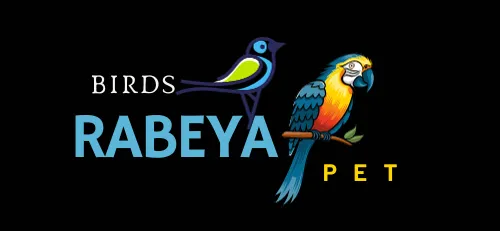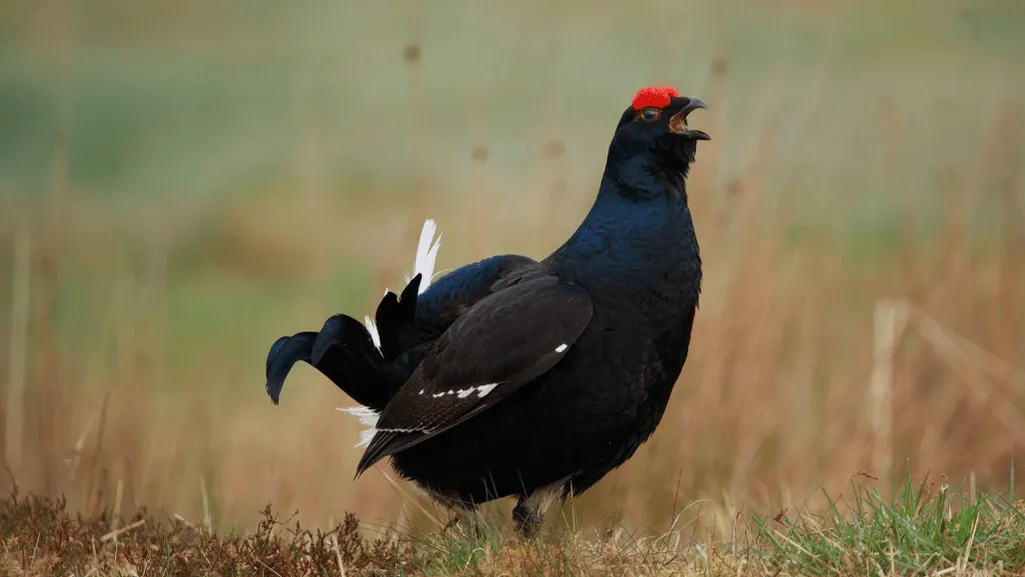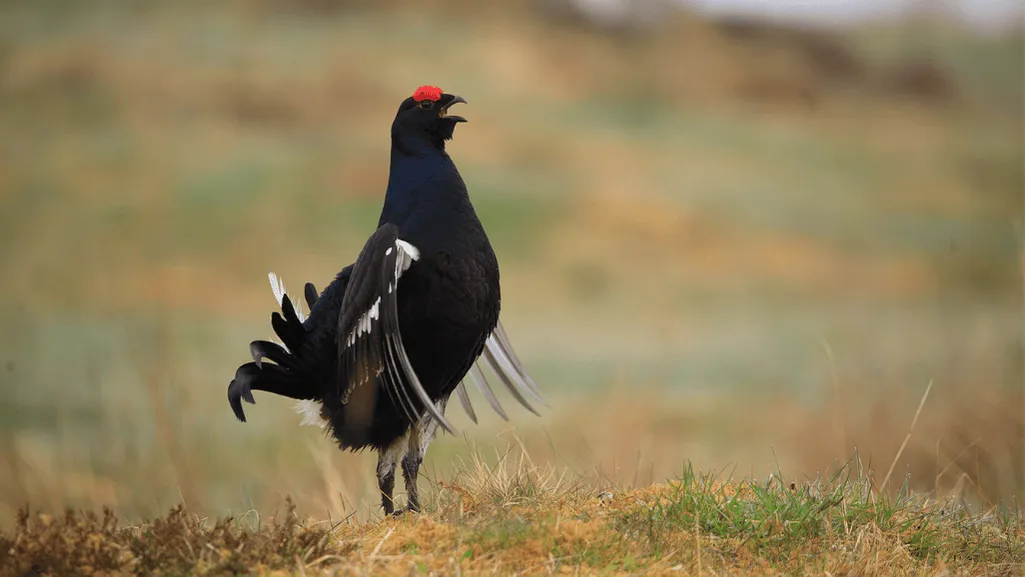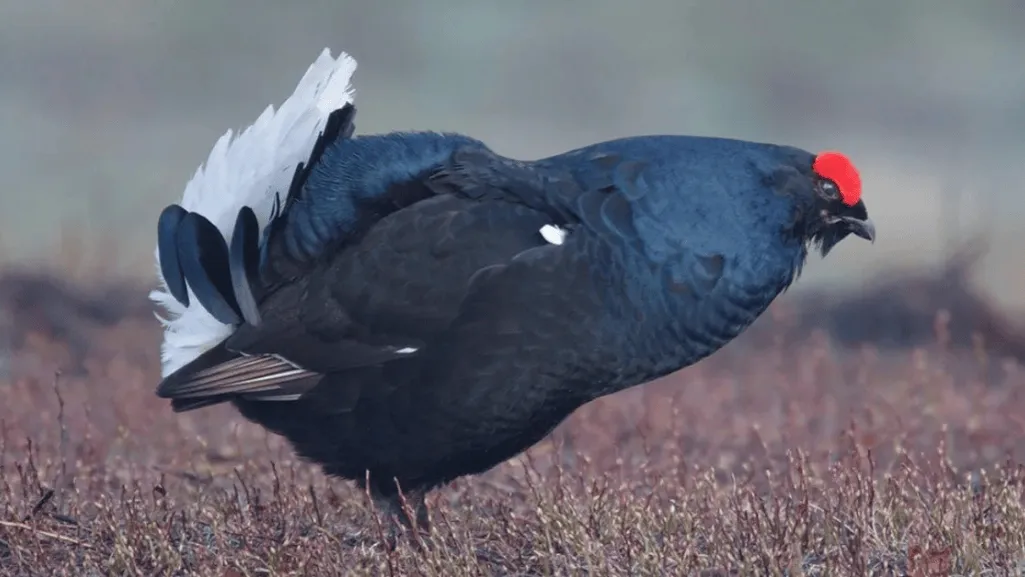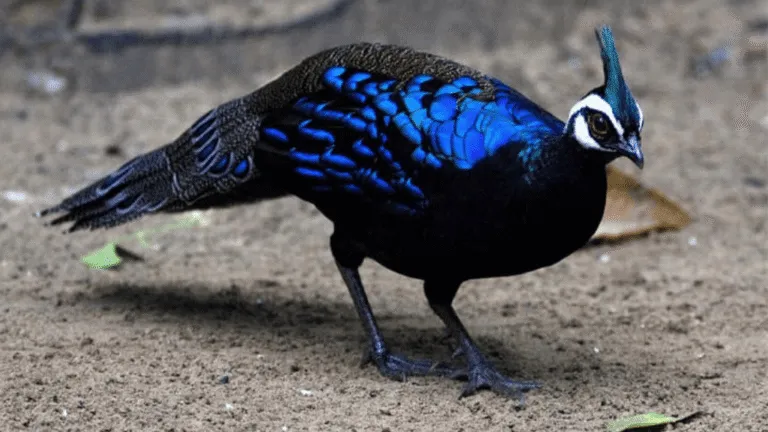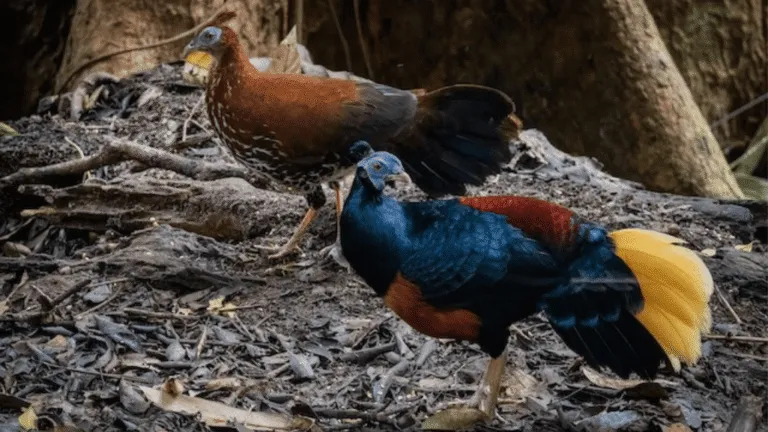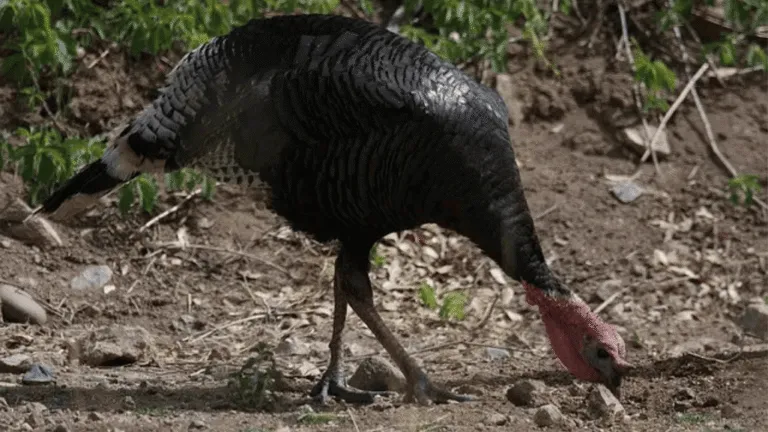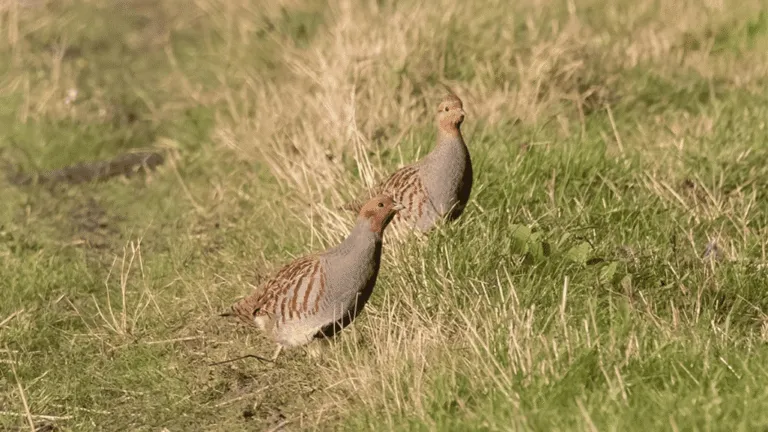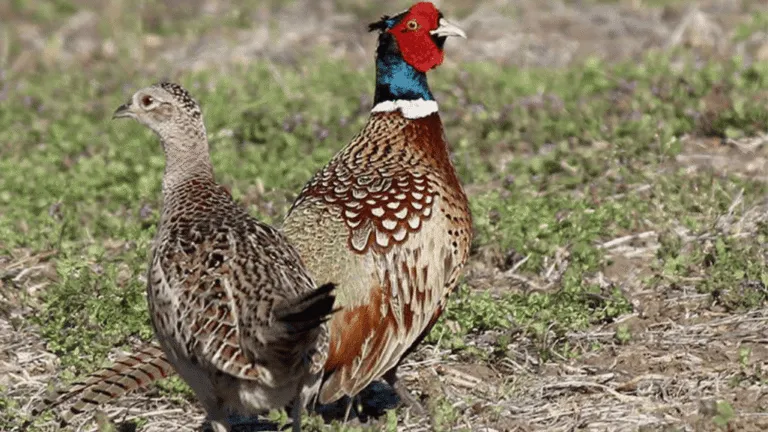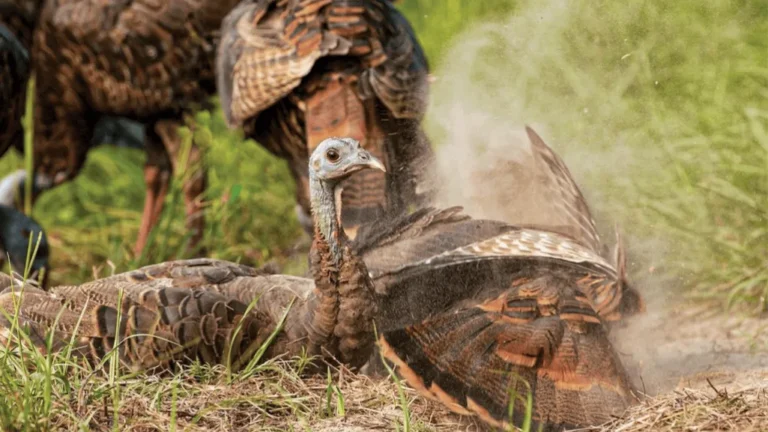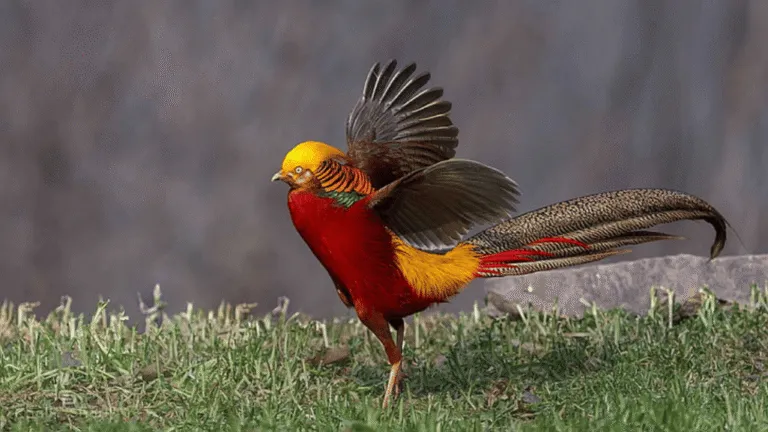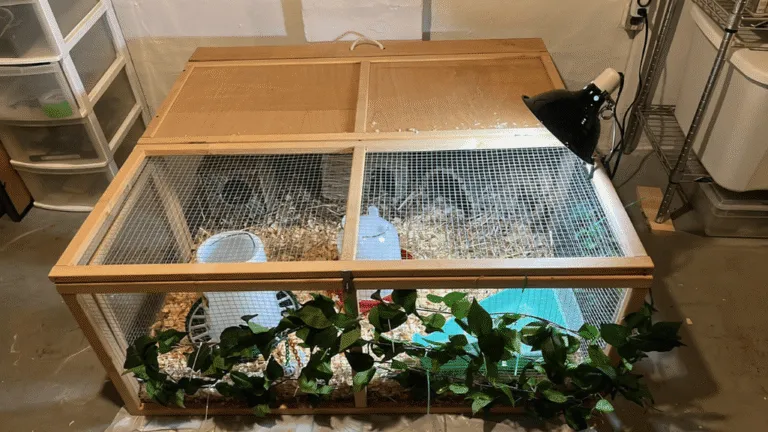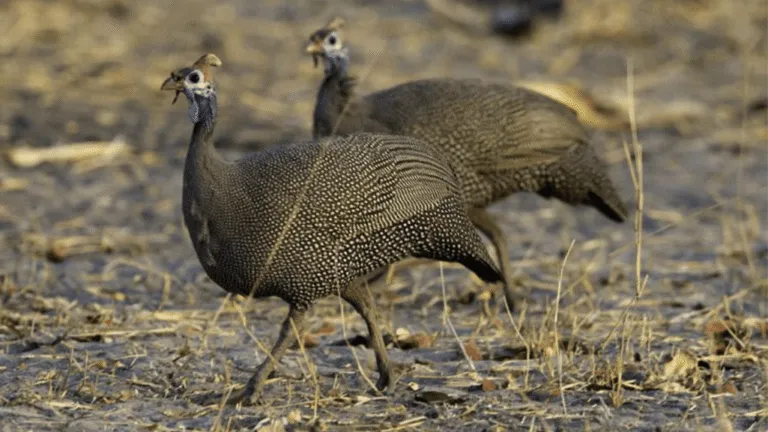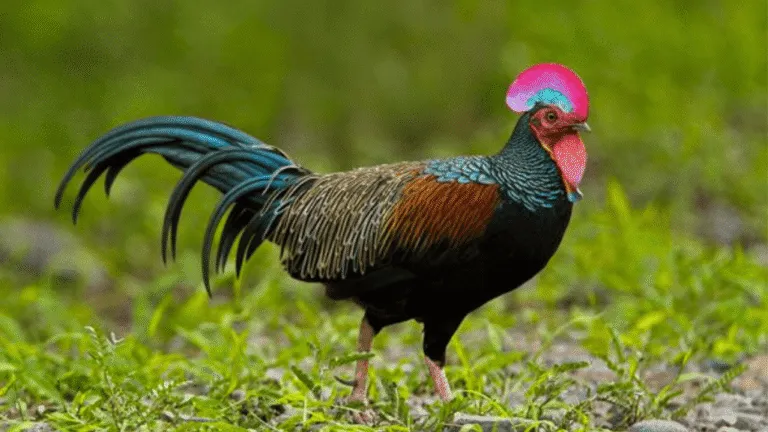The black grouse is one of Britain’s most dramatic upland birds: patient dawn-watching rewards you with a spring lek—males flashing a lyre-shaped tail and bold white wing-bars, while females remain smaller and cryptically patterned in grey-brown plumage.
Where to see: visit upland moorland and heather-rich edges near scattered trees to watch lek behaviour safely from a distance. Always arrive before first light, use a hide or viewpoint agreed with landowners, and avoid disturbing the birds during the crucial spring display.
Young chicks feed first on protein-rich invertebrates before switching to buds and shoots of bilberry and heather; adults commonly use nearby conifer cover for shelter and winter foraging. In the UK, viable populations persist in parts of North Wales, northern England and mainly across Scotland—check local reserve pages for up-to-date site details.
Field names such as blackcock (male) and greyhen (female) remain in use and can help with quick ID in the field. Later sections compare this species to other grouse and cover habitat, diet, lek dynamics and conservation measures.
Key Takeaways
- Best viewing time is at dawn in spring when lek displays peak—plan to arrive well before first light.
- Males are unmistakable at the lek with a lyre-shaped tail and white wing-bars; females are cryptic and smaller.
- Chicks begin on invertebrates and rapidly shift to plant shoots such as bilberry and heather.
- Preferred habitats are moorland and upland edges that combine open lek sites with nearby trees for cover.
- Conservation and joined-up land management influence local population resilience—consider supporting surveys or habitat projects.
Meet the Black Grouse: Identification, Size, and Name Origins
A close look at tail shape, wing-bars and posture separates the showy males from the camouflaged females — the classic field clues for recognising this upland grouse species.
How to spot males and females
Males are striking: glossy black with a bluish sheen, bold white wing-bars and conspicuous red eye-combs. The long outer tail feathers curl outwards into a lyre shape — a key feature used in courtship displays and the dramatic dance seen on leks.
Females are smaller and far more discreet. Their grey-brown, finely barred plumage and notched tail help them blend into heather and grass while nesting, making females much harder to spot away from leks.
Video: field footage showing male display and tail fanning at a lek (opens in new tab).
Size, scientific name, and common names
Adults show clear size differences: males typically measure about 60 cm (roughly 24 in) and commonly weigh 1,100–1,250 g; females are about 45 cm (18 in) and weigh around 750–1,100 g. (Note: a small number of records cite heavier males; check regional field guides for local averages.)
The accepted scientific name is Lyrurus tetrix (formerly placed in Tetrao). Traditional field names — blackcock for males and greyhen for females — persist in many guides and among observers.
- ID tip: at dawn males display on open ground — tail shape and white wing-bars are easiest to confirm then.
- Seasonal cue: adults feed heavily on bilberry and heather shoots through summer; in winter they move to conifer cover where needle browsing is common.
Black Grouse Behavior: Lekking, Displays, and Calls
Before dawn in spring, male black grouse gather at long-used open arenas — leks — where a ritualised morning performance unfolds. These traditional sites concentrate display activity so arrive early, stay still and keep well back to avoid disturbing the birds.
The spring spectacle at dawn
Lekking often begins in near-darkness and builds into a rapid sequence of displays as light increases. Calm, clear mornings typically deliver the most sustained activity and the best chance to watch courtship routines unfold.
Signature sounds
The soundscape will often lead you to a lek: listen for a bubbling, dove-like roo-kooing that carries across upland areas, punctuated by sharp hissing notes often written as “Tischu-wee.” Use calls to locate arenas before you move.
Dance, tails, and dominance
Males perform chest-forward struts, low-wing postures and fanned lyre-shaped tails while flashing white wing-bars and red combs. These ritual gestures and postures communicate dominance to rivals and attract visiting females; tail length and vigour often influence success.
Female choice, mating, and chicks
Females usually select a single mate each year—often rapidly—then leave to nest. Clutches average roughly 6–11 eggs and hatch after about 22–28 days; hens lead chicks to insect-rich bogs where young rely heavily on invertebrate prey during the first weeks.
Winners, costs, and survival
Older, larger males with longer tails secure most matings; many younger males do not mate. The energetic and risk costs of prolonged display — reduced feeding time, fights and increased predation risk — can lower survival in poor years.
“Observe frequency of display bouts, response to rivals, and sustained attendance through the morning without approaching birds.”
- Set expectations: arrive well before first light and settle quietly.
- Sound cues: use roo-kooing and the sharp hissing calls to pinpoint arenas before moving.
- Ethics: watch from a distance, use hides sited before dawn with permission, and avoid actions that prompt birds to flee.
Habitats, Range, and Seasonal Diet
Black grouse favour landscape mosaics where open moorland and upland heath meet patches of trees and bog — a mix that provides display arenas, brood-rearing bogs and winter shelter within a few kilometres.
Where they live
The species occupies broad Palearctic areas: from the Alps and Scandinavia, across much of northern Europe and Siberia, and into parts of Kazakhstan, Mongolia and north‑east China. Core elements are upland heath, boggy swards and moorland with nearby tree cover that supplies winter shelter and perching sites.
From moorland to forests
Seasonally, flocks move between open lek sites and denser cover. In winter, many birds shelter and forage in conifer stands (for example Scots pine or regional equivalents) where needles and buds supplement their diet; come spring they disperse back to open land to display and raise broods on short vegetation and heather-rich patches.
Seasonal diet and life stage shifts
Chicks depend on protein-rich invertebrates in wet, insect-rich areas during their first weeks. Adults then shift to fruit and plant shoots — especially bilberry and heather buds — through spring and summer, with winter diets including needles and buds in conifer cover.
Good habitat mosaics link winter cover, open lek sites, and insect-rich brood areas across large landscapes.
- Landscape pattern: edges between forest and open land support lekking and brood rearing.
- Conservation note: sustaining connected habitats reduces predator pressure and supports long-term population persistence.
- For UK viewers: seek upland moorland and farmland with scattered trees at first light; check reserve and RSPB pages for current site advice.
For more species detail and range maps, see the black grouse page.
Conservation, Threats, and Land Management for Survival
Landscape-scale planning and joined-up management are essential to stop shrinking leks and rebuild the connected upland mosaics that support breeding and winter survival of the black grouse across its range.
Population trends: Globally Lyrurus tetrix is assessed as Least Concern, with millions of birds across the Palearctic, but in western Europe many local populations have declined or vanished because of habitat loss, fragmentation and other pressures. Regional status can differ — check national red lists for local assessments.
Key pressures
Persistent threats include loss of heath and birch edges, afforestation with uniform plantations that removes habitat mosaics, added fences and perches that elevate predator efficiency, recreational disturbance at leks and collisions with powerlines.
Predators such as foxes and corvids tend to concentrate where habitat is fragmented; higher predator densities raise egg and chick losses and can reduce adult survival, contributing to local population decline.
What they need and practical steps
Black grouse require large, linked upland mosaics: heather-rich moorland for feeding and lek sites, insect-rich bogs for brood rearing, and nearby tree cover for winter shelter. Practical actions for land managers include:
- Restore and maintain heathland and birch edge habitat; avoid converting large areas into uniform commercial conifer monocultures.
- Remove, mark or re-route unnecessary fences and reduce artificial perching sites to limit predator advantage over nests and chicks.
- Plan forestry edges, tracks and powerlines with wildlife in mind — use mitigation measures to reduce collision risk and disturbance.
“Recovery often takes years and depends on cooperation among landowners, conservation groups, and local communities.”
Ethical viewing supports conservation: arrive before first light, use hides sited with permission, remain silent and leave once birds disperse to avoid intruding on mating and display periods.
Examples and ways to help: UK reintroduction and advisory work by organisations such as the RSPB and the Game & Wildlife Conservation Trust have demonstrated that coordinated habitat restoration and local engagement can stabilise or increase local populations. To help, consider joining local surveys, supporting habitat projects, or reporting sightings to national atlases and recording schemes.
Conclusion
The dawn lek remains one of the most memorable encounters for birdwatchers, a ritual of display and sound that showcases why the black grouse is such a prized upland species. Approach sites quietly, observe from a respectful distance and let the courtship unfold without disturbance.
Male black grouse are instantly recognisable by the lyre-shaped tail and stark light–dark contrasts; females remain camouflaged, selecting mates while tucked into vegetation. Seasonal movements tie open moorland leks to wet brood sites and nearby winter conifer cover — a vegetation mosaic vital for year‑round survival.
Want to help? Support habitat projects, respect viewing guidance, and contribute records to local survey schemes (for example national bird atlases and the BTO in the UK). Small, sustained actions by individuals and land managers can help secure resilient local populations of this species.
Top takeaways: arrive before first light; watch ethically from hides or viewpoints; and support connected habitat conservation to maintain healthy grouse populations across upland areas.
FAQ
How can I tell males and females apart in Lyrurus tetrix?
Males are unmistakable at the lek: glossy black plumage with a bluish sheen, bold white wing-bars, a lyre‑shaped tail and bright red eye‑combs. Females are smaller and cryptic — grey‑brown with fine barring and a notched tail that helps them blend into heath and moorland when nesting.
What is the species’ scientific name, typical size and common field names?
The correct scientific name is Lyrurus tetrix (historically placed in Tetrao). Males are typically about 60 cm (24 in) and females about 45 cm (18 in). Field names include blackcock for males and greyhen for females.
When does the spring lekking spectacle occur and why is timing important?
Lekking occurs at dawn in spring. Early‑morning light and typically low wind improve visibility and sound transmission, so displays and calls carry further and are most continuous just before and at first light.
What sounds should I listen for at a lek?
Listen for a continuous, dove‑like bubbling call often written as “roo‑kooing” and for sharper hissing notes rendered as “Tischu‑wee”. These vocalisations help locate leks before you move into position.
What elements make up the display and how do tails and combs factor in?
Displays combine ritualised dances, chest‑forward struts, low‑wing postures and tail fanning. The lyre‑shaped tail and red eye‑combs are flashed to signal dominance; longer tails and energetic displays generally attract more females.
How does female choice and mating work, and what is the incubation period?
Females typically mate once per season, often choosing quickly based on male display quality; they can store sperm and then incubate a clutch. Clutches commonly contain around 6–11 eggs and hatch after approximately 22–28 days.
Which males usually win at leks and what are the survival costs?
Older, larger males with long tails and strong, sustained displays tend to dominate and secure most matings. However, intensive displaying and fighting reduce feeding time and can lower survival, especially when predator pressure is high or habitat is poor.
What habitats and range does this species prefer?
They favour upland heathlands, moorland, forest edges and boggy areas across parts of Europe and Asia. Seasonal movements typically include winter use of denser conifer cover and spring dispersal to open lek sites.
How does diet change with season and age?
Chicks rely heavily on invertebrates for protein during their early life; adults feed on bilberry, heather buds and shoots through spring and summer, shifting to needles and buds in conifer stands over winter.
What is the conservation status and what trends are observed?
Globally the species is listed as Least Concern, but many local populations have declined and lek sizes have shrunk in western Europe because of habitat loss and fragmentation. Consult regional red lists and conservation bodies for local trends.
What are the main threats to population survival?
Key threats include habitat loss and fragmentation, loss of heather‑rich upland, fences and perches that aid predators, disturbance at display sites, collisions with powerlines, and predation by foxes and corvids.
What habitat management actions help this species thrive?
They need large, connected areas for lekking, insect‑rich bogs for chicks and heather‑dominated uplands. Landscape‑scale management that restores heathlands, reduces linear hazards and removes unnecessary perches supports breeding, reduces predator advantage and aids long‑term recovery.

